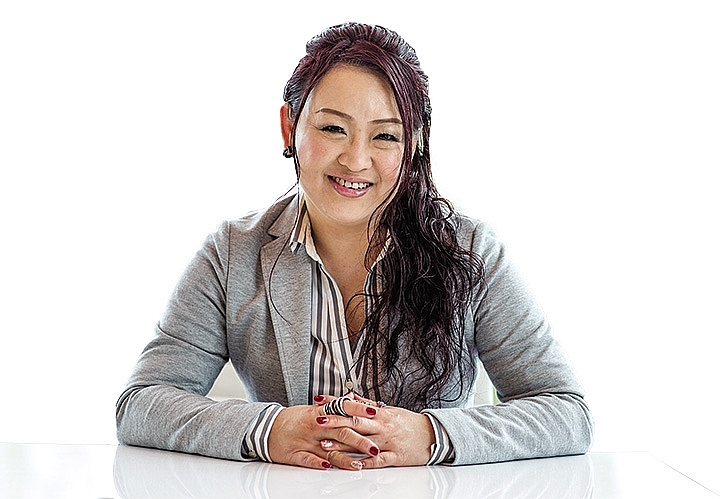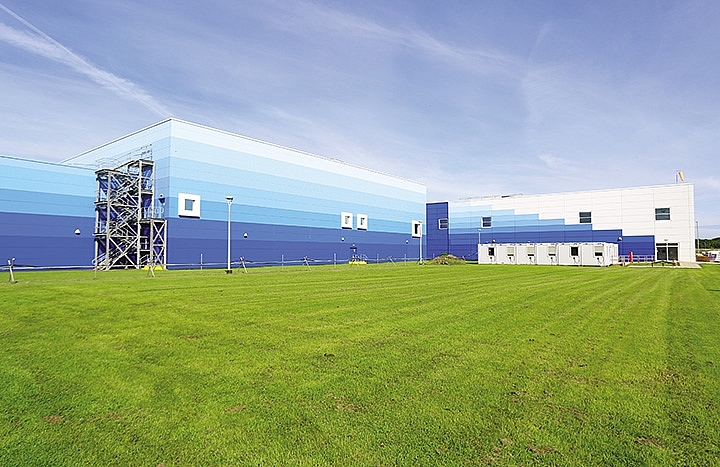Translating challenges into radical innovation
 |
| Pamela Phua, general director of AkzoNobel Vietnam |
As an instrumental expert with more than 20 years’ experience in the paint and coatings industry, you have taken part in various United Nations Climate Change Conferences such as COP23 and COP24 both as a business leader and an innovator. What role can business and innovation play in addressing climate change?
Business has a key role to play in addressing the challenges of climate change. It is the world’s most powerful economic force, and it is responsible for the majority of spending, wealth creation, and investment. Where business goes, others will follow.
Innovative initiatives from business are part of the global shift that will open the floodgates to large-scale opportunities that can combat climate change and change the lives of millions around the world.
The report published by the World Business Council for Sustainable Development (WBCSD) showed that by 2030, businesses will cut CO2 equivalent emissions by 3.7 billion metric tonnes a year. That is half a tonne of CO2 for every man, woman, and child on the planet, every year. The report goes further, estimating that if all relevant companies that could join the initiatives actually signed up to them, the total impact on emissions could go as far as 10 billion tonnes every year.
AkzoNobel has taken a unique approach by consciously translating the world’s most pressing challenges into radical product innovations. How can these solutions help the globe cope with climate change?
In the “2030 Agenda for Sustainable Development,” the United Nations established 17 Sustainable Development Goals with a comprehensive list of targets to be achieved by 2030.
As a leading global paints and coatings company with a strong commitment to sustainability, AkzoNobel supports these goals, which is in line with our purpose to create everyday essentials to make people’s lives more liveable and inspiring.
At AkzoNobel, we are already responding with sustainable product innovations. For darker, colder parts of the world, where buildings are now designed to maximise natural light, we have created a paint called Light & Space. This paint, like the name suggests, reflects light and makes interior spaces appear brighter and more spacious. This reduces the need for artificial lighting, and could mean an energy savings of up to 22 per cent.
We have also been working on solar reflective coatings for use in warmer climates. Exterior paints that reflect infrared rays help keep the interiors cooler and reduce air conditioning costs. Solutions like these innovative paints are good examples of our commitment to developing new technologies that bring sustainable benefits to our customers.
 |
| The Ashington facility in the UK - AkzoNobel's most advanced and sustainable factory uses a variety of renewable energy sources, estimating 50 per cent carbon footprint reduction compared with the production facilities at the plants it is replacing |
Specifically, what results have these innovations posted when being applied in the two mega economies of India and China?
In India, where 10 of the most polluted cities are located (according to WHO statistics), we have developed an air-cleansing paint based on photocatalytic technology that can degrade major atmospheric pollutants like nitrogen oxides and sulphur oxides. We can help to mitigate soil pollution in India by controlling the release of biocide used in our paints.
Public urination is a major issue in India. The government has launched a nationwide campaign called “Swachh Bharat Abhiyan” to promote public cleanliness. To address this problem, we have developed a superhydrophobic coating with extreme liquid repellence that can protect walls by resisting the adhesion of urine, spit, and other stains. Our product will be able to help transform and maintain the cleanliness of many cities and towns across India, thus providing communities with more liveable neighbourhoods and inspiring surroundings.
Regarding China, the local government has developed a sophisticated policy system in recent years to promote energy conservation at buildings. These include building energy codes which state the minimum standards for the energy efficiency of building components such as envelope; heating, ventilation, air conditioning (HVAC), and the power system. In order to contribute positively to better the country’s energy efficiency and adapt in this storm of policy changes, AkzoNobel provides solutions for suppressing heat outflow in winter with our Thermal Insulation Decorative Board systems and reducing heat gain in the building during summer through our Keep Cool offerings.
As a corporation in the paint and coatings industry since 1792, with operations in more than 80 countries, AkzoNobel’s operations, especially manufacturing, may have a sizeable carbon footprint. What internal policies or initiatives does AkzoNobel have to address ecological problems, such as the over-consumption of energy or reduction of carbon emissions?
Energy is one of our single biggest expenditures, and keeping costs down directly affects our bottom line. By investing in energy efficiency and renewable energy with partners and building a robust energy portfolio, we are securing profitability in the long-term. The company already uses 40 per cent renewable energy and targets becoming carbon neutral and use 100 per cent renewable energy by 2050.
The company expects a 20 per cent revenue share by 2020 from products that are more sustainable for our customers than those of our competitors. Besides, we aim to reach 25-30 per cent more efficient resource and energy use across the entire value chain by 2020 (measured by cradle-to-grave carbon footprint reduction).
What are AkzoNobel’s most remarkable achievements in implementing its sustainability strategy in Vietnam?
Most recently, AkzoNobel Vietnam continued to be honoured at the CSI 2018, which was evaluated and announced by the Vietnam Chamber of Commerce and Industry (VCCI) of the Ministry of Industry and Trade. Ranking in Vietnam’s Top 100 Most Sustainable Businesses for the second time demonstrates AkzoNobel’s efforts to achieve sustainability in the country, not only in our business, but also in our environmental and social impact.
The two Dulux and Maxilite paint lines are always considered top of the product range where AkzoNobel competes. Dulux is one of the few Vietnamese brands to be certified with a Green Label by the Singapore Environment Council, a seal of endorsement of its environmentally friendly claims whose purpose is to prevent the spread of green-washing. That is why Green Label-certified products like Dulux have earned consumers’ loyalty with their sustainability.
AkzoNobel is also the pioneer in promoting the green architecture trend in Vietnam by not only introducing and providing customers with eco-friendly solutions but also by partnering up with multiple parties to build a sustainable future. Some of the most remarkable activities include organising Smart City-Sustainable City seminars in June that attracted the participation of more than 600 architects, investors, and developers nationwide; sponsoring the Sustainable Real Estate Development Conference in Ho Chi Minh City in July; and organising a group of Vietnamese architects to join the World Green Building Week in September.
What the stars mean:
★ Poor ★ ★ Promising ★★★ Good ★★★★ Very good ★★★★★ Exceptional
 Tag:
Tag:
Related Contents
Latest News
More News
- How AWS is powering the next-gen data era (December 09, 2025 | 13:14)
- Outlook in M&A solid for Singapore (December 08, 2025 | 10:31)
- Vietnamese firms are resetting their strategy for global markets (December 05, 2025 | 17:04)
- LPBank Securities accelerates AI and data innovation with AWS (December 05, 2025 | 09:00)
- Improving traceability capacity with Zebra Technologies (November 26, 2025 | 10:08)
- Ho Chi Minh City engages 500 CEOs in dialogue on building global megacity (November 25, 2025 | 16:00)
- CEO shares insights on Phu My 3 IP’s journey to green industrial growth (November 17, 2025 | 11:53)
- NS BlueScope CEO highlights decade of sustainable steel efforts (November 15, 2025 | 10:00)
- SCG maintains strong cash flow and drives low-carbon growth in Q3 (November 07, 2025 | 09:53)
- Thai Huong: a visionary business leader bridging Vietnam and Russia (November 05, 2025 | 17:00)
























 Mobile Version
Mobile Version